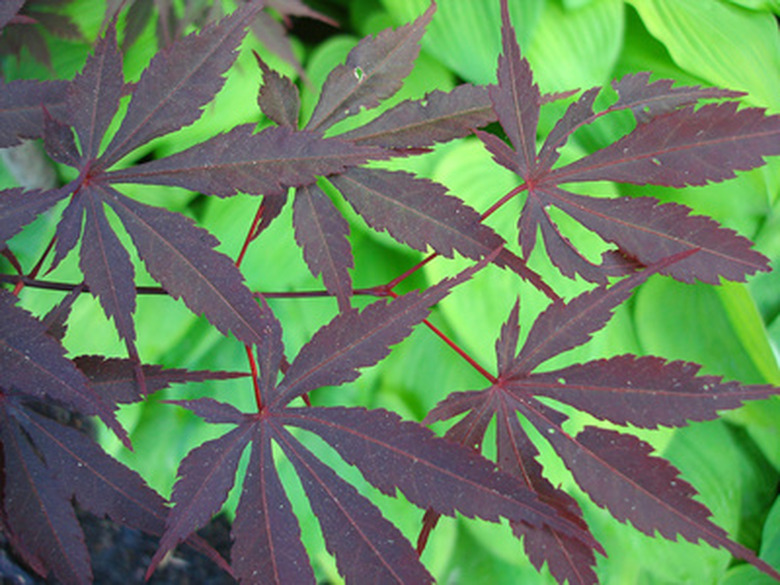Problems With Japanese Red Maples Not Leafing Out
When Japanese maples fail to leaf out or they produce sparse or an unusually small number of leaves, often it can be traced to a few common causes. Weather extremes of heat, cold, wind and excessive sun can affect foliage development as can disease and drought. Often a combination of conditions and stresses are involved. When the roots and branch wood of Japanese maple trees remain alive, the tree often can be salvaged and the foliage restored the next spring.
Tree In Dormancy
Japanese maples are deciduous trees and have a dormant period in the winter when the leaves are shed and the branches remain bare of leaves. Depending on your specific cultivar and climate, a Japanese maple can remain leafless from November through April.
Branch or Bud Death
Leaves will fail to form on branches that have been damaged or killed by freezing temperatures or disease. Though rare in Japanese maples, fungal and viral root rot can kill the roots and phloem wood of the tree causing tissue death and ceasing leaf production. Dry, desiccated or brittle twigs and branches that cannot flex without snapping are all signs of tissue death. There are no treatments to cure root rot and disease damage, but sometimes the trees can outgrow the damage with generous watering and fertilizing to speed up new woody tissue development.
- When Japanese maples fail to leaf out or they produce sparse or an unusually small number of leaves, often it can be traced to a few common causes.
Winds & Drought
Japanese maples are susceptible to wind damage that can cause bud kill, preventing a tree from leafing out. Wind also can defoliate young and mature leaves from branches. When the tree is severely stressed for water, the woody tissues can die and leaf buds, if present, will fail to swell and unfurl. Drought-stressed trees also can experience wilt and leaf drop. In extreme cases of prolonged drought, the tree will die, the branch wood desiccate and no leaves will be produced.
